This article will be helpful for anyone whose dogs are aggressive against outdoor cats or one of your cats. First, we’ll look at the causes of this behavior, and then we’ll talk about solutions.
Contents
Why is my dog so aggressive towards cats?
Here are some reasons for this behavior:
- Resentment. This is one of the most common reasons why dogs hate cats. Perhaps your dog was once attacked by a cat and is now taking revenge on all felines.
- Age-related changes. Your dog’s manners may change after neutering or after puberty. As a puppy, your Fido may have allowed cats more, but now as an adult, he may not be ready to put up with it.
- Jealousy. If your dog sees you devoting more time to the cat, the dog may feel jealous, which causes aggression.
- Character incompatibility. For example, your dog is playful and active, but the cat, on the contrary, doesn’t like to move (perhaps due to its advanced age). Then they will irritate each other. That is why experts do not advise bringing together animals of different characters.
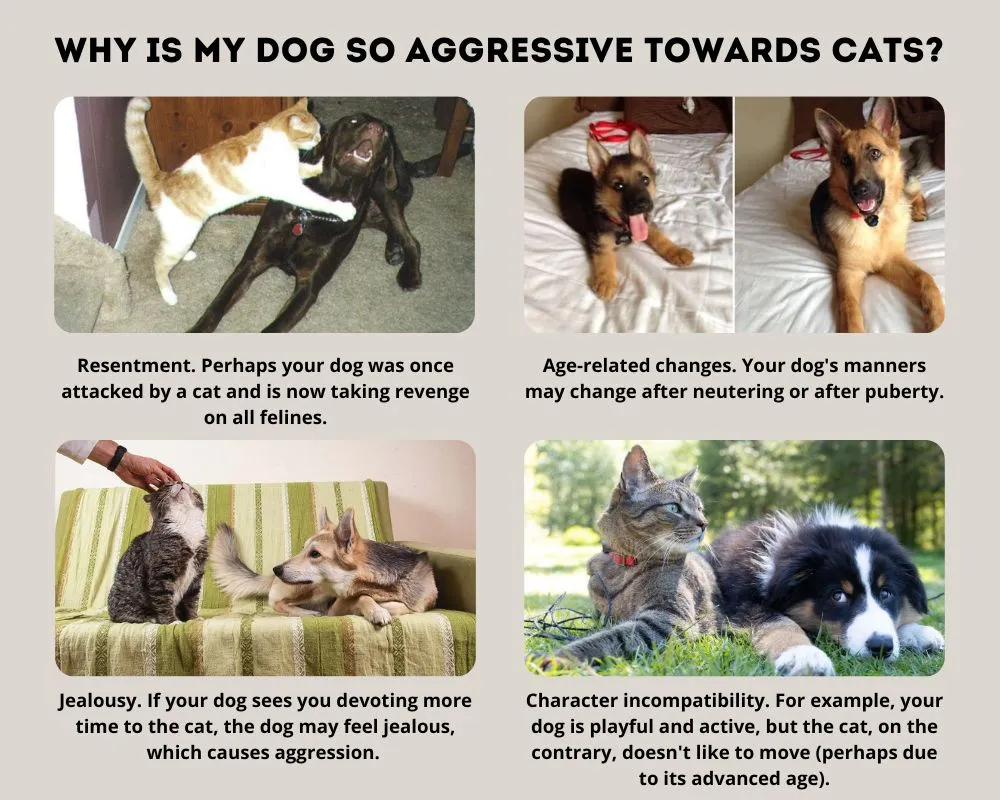
Perhaps your Fido has several factors at once which affected him. Also, dogs have the instinct to chase prey, so they need to be trained from childhood on how they can behave and how not.
Here’s another helpful tip from Quora:
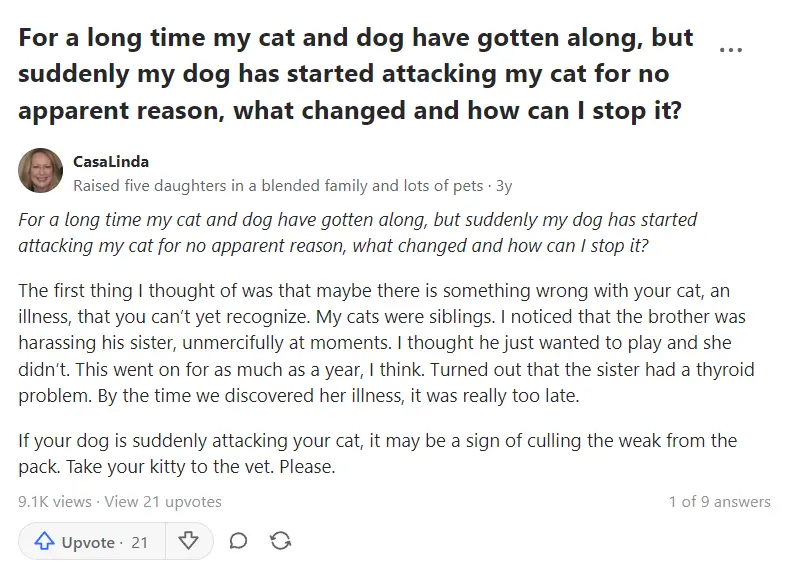
👉 If your dog shows aggression not only to cats but also to other animals or people, this may indicate a physical or mental health problem. I recommend reading up on why dogs become aggressive.
4 Steps to Handle Dog Aggression Against Cats
No matter which of the above causes aggression, the solution is one – regular training combined with physical exercise. It is also important to create a comfortable environment for the animal.
A comprehensive approach should help. But it will only work if the cause of aggression is not some medical condition.
1️⃣ Teach your dog special commands
This is probably one of the main ways to wean your dog from chasing and attacking cats. Commands such as “leave,” “place,” and “no” can help you keep your dog under control. It also promotes mental development. The dog learns obedience and discipline. That’s why training is recommended for everyone, not just those with problems.
Research methods of teaching a particular command. Then use the command when your dog shows any signs of aggression (that is, not just in extreme cases). Your goal is to teach your dog absolutely no reaction to cats.
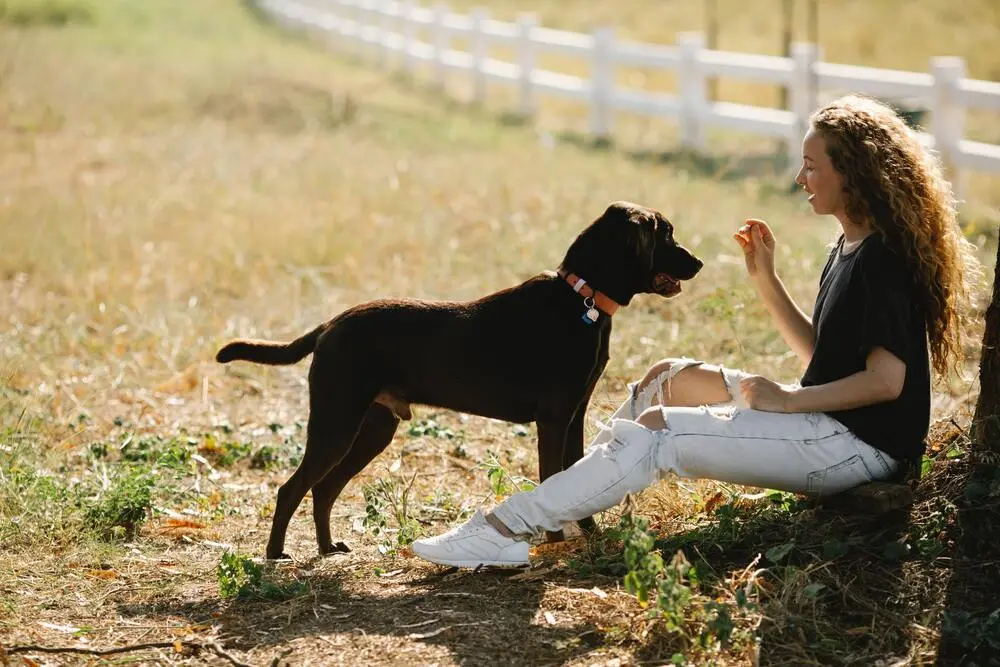
Be firm when you give the command, as you must show your dog that he cannot behave that way. But don’t punish the dog, don’t yell at him, and don’t pull on the leash. You need to remain calm; otherwise, your agitation will be transmitted to your dog.
You can use treats or a favorite toy as a distraction. Work on the command until your dog performs it perfectly at home, then move outside.
In the beginning, you can test the commands by keeping your dog on a leash or in a muzzle. You can let the dog walk free only if you are completely confident in the dog and know that the cat has escape routes.
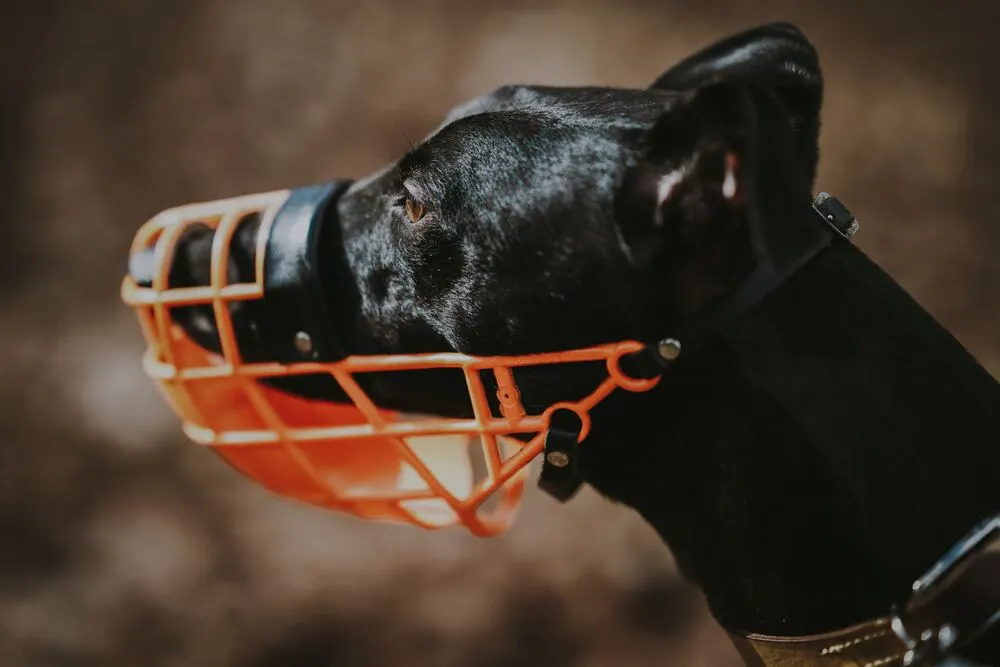
📌 Some dogs learn quickly, in 2 weeks; others take several months. Learning a new command takes a lot of effort, but it's worth it.
2️⃣ Create positive associations with cats
In training, there is such a thing as counterconditioning. It attempts to change a pet’s negative emotional reaction to a stimulus (in our case, a cat).
How does this work?
- Prepare special treats. It should be something special that your dog will be crazy about. If he doesn’t respond to some treats, replace them. Use them only during training; otherwise, it won’t make a difference.
- You can start by showing your dog the cat from a distance. It is important for the dog to see the cat and know that it is nearby, but don’t push them face to face! If the dog reacts violently at this distance, you must increase the distance.
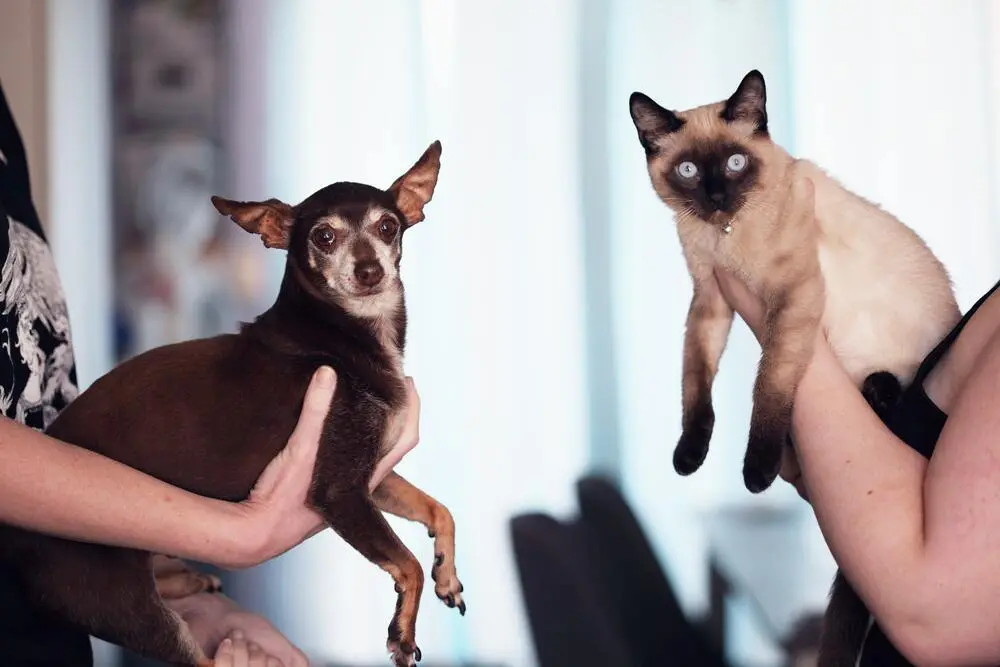
- As soon as the dog looks at the cat, say some positive words, for example, ” Good boy”, so that the dog will pay attention to you. When he is distracted by the stimulus, you need to reward him with a treat. Repeat this 15-20 times. The training time should not exceed 20 minutes. If the dog does not take his eyes off the cat, increase the distance or change the treat.
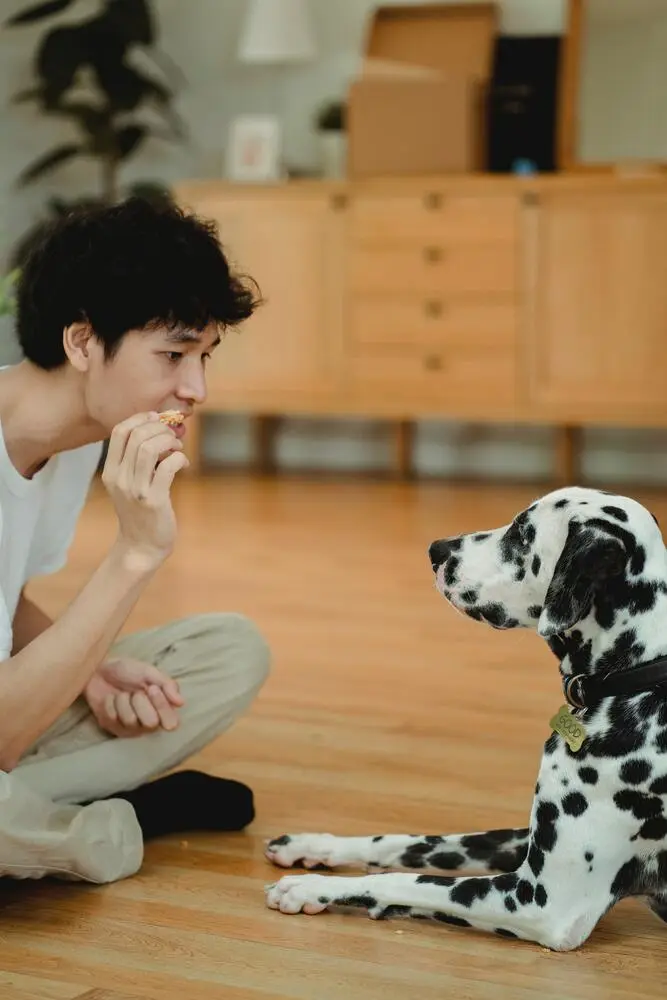
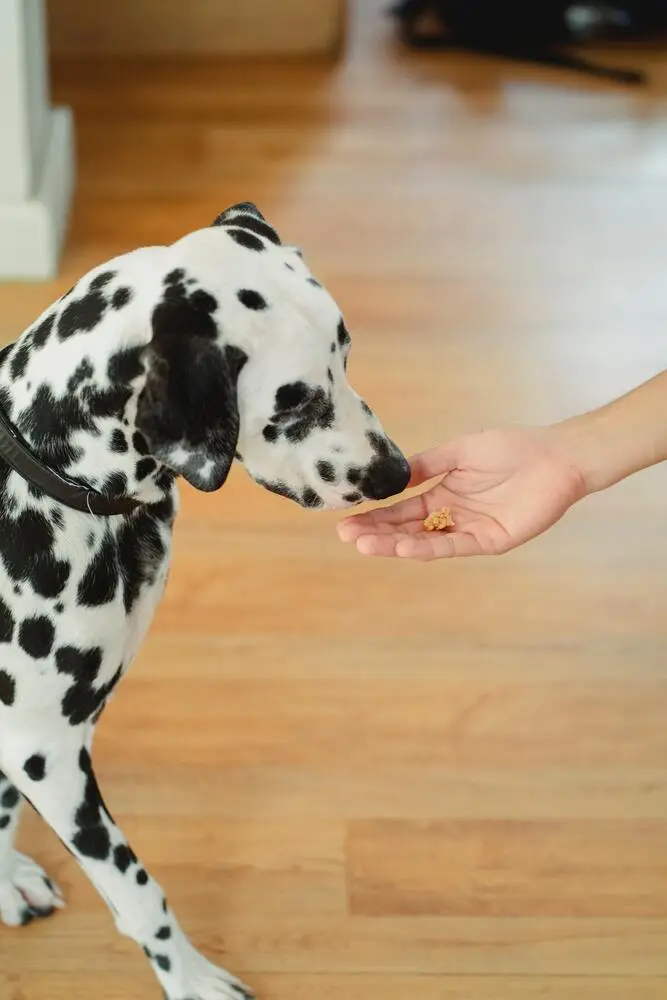
- If you no longer need to say the magic word to distract the dog from the cat (the dog himself takes his eyes off the stimulus and looks at you expecting a treat), then you can move on to the second stage. Reduce the distance little by little and repeat positive reinforcement for good behavior.
❗️It's important to have a calm cat participating in these sessions, which definitely won't panic, run away, or attack. The dog must remember that nothing bad happens when they are around.
Perhaps you can even use a toy cat at first. But your dog has to accept it as real and react to it.
But things are more complicated if you are dealing with a very overexcited dog. Such dogs may not see anything around them at all. Therefore, you may need the professional’s help.
3️⃣ Channel his energy in a different direction
If your dog is tired after an activity, he won’t have the energy to chase the cat. So try to spend more time playing games and going for walks.
Establish a daily routine, and try to stick to it. All this contributes to the development of the discipline.
Versify the routine of your four-legged friend. Ideas abound, such as
- 👉 provide puzzle toys for your dog to use his brain to get a treat;
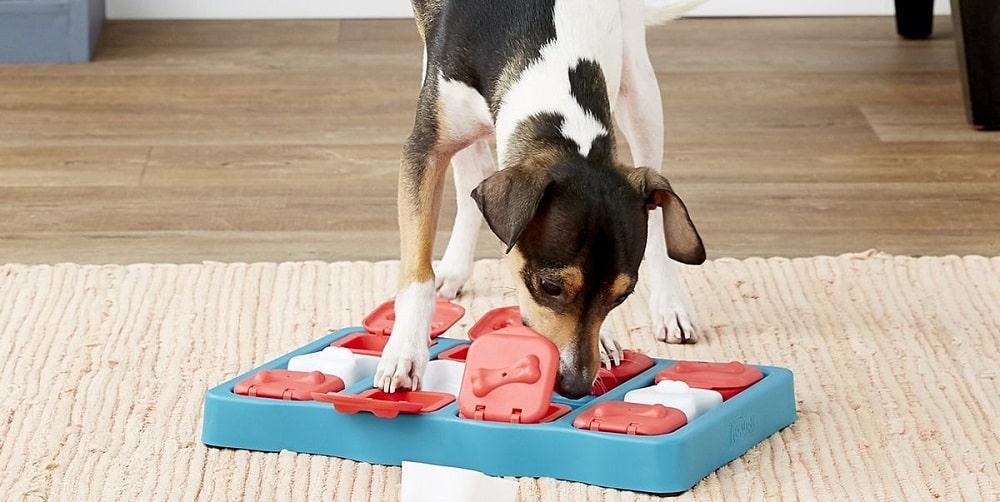

- 👉 do agility training;
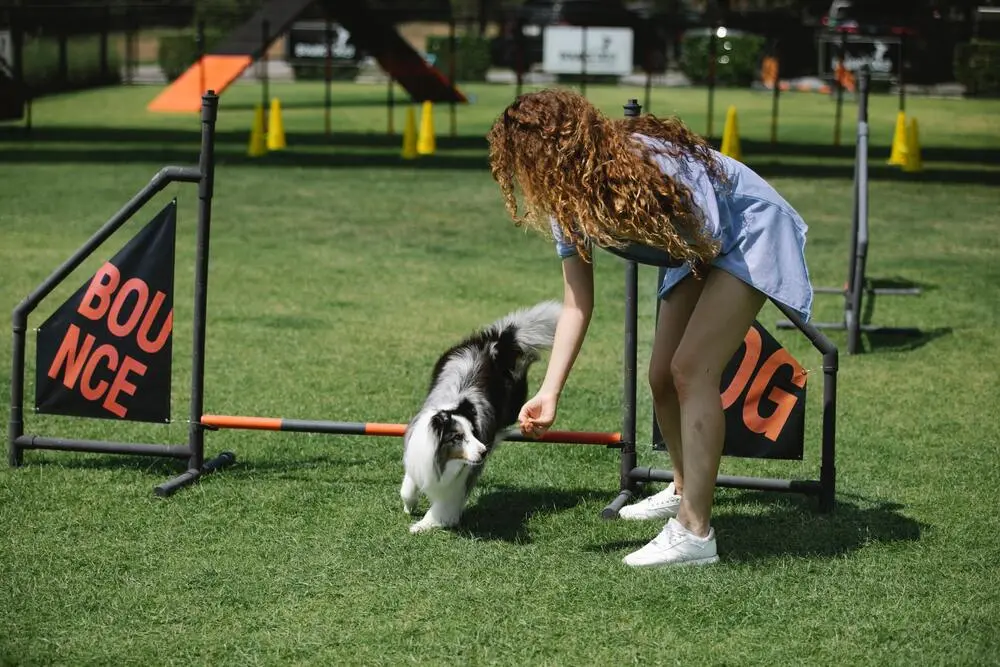
- 👉 make an interesting dog play area in your yard, or create a sensory garden.

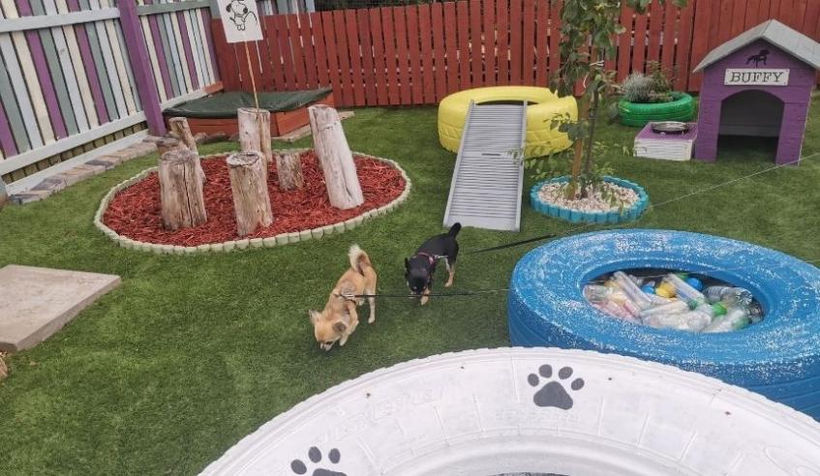
If your dog is often home alone, consider doggie daycare.
Don't forget about your cat. Cats need entertainment and physical activity as well. You can even get her into training. These all contribute to a positive change in the pet's personality.
4️⃣ Use calming remedies
As an extra help, you can use calming remedies for your dog. Here is an example of such remedies.
📌 A scented diffuser. You can place it in the room where your dog spends the most time. There are diffusers with soothing oils or with pheromones.
Last update on 2024-04-23 / Affiliate links / Images from Amazon Product Advertising API
📌 Calming Collar. It also exudes a soothing scent.
Last update on 2024-04-23 / Affiliate links / Images from Amazon Product Advertising API
📌 Thunder shirt. It can help an anxious dog while walking outside. It may be suitable for shelter dogs.
Last update on 2024-04-10 / Affiliate links / Images from Amazon Product Advertising API
📌 Calming treats.
Last update on 2024-04-06 / Affiliate links / Images from Amazon Product Advertising API
I often talk about them, but these products can be used for almost any problem. Of course, they don’t help every dog, but they are worth a try if you haven’t already done so.
Extra tips if your cat and dog can’t get along
If your cat and dog can’t get along in your home, I have a few more extra tips for you.
✅ Try to minimize your animals’ contact with each other. In addition to feeding them separately, provide each with a secluded corner away from each other.
You can put partitions for the dog so he doesn’t have access to certain rooms. You can also make a separate space or an entire room for your dog.

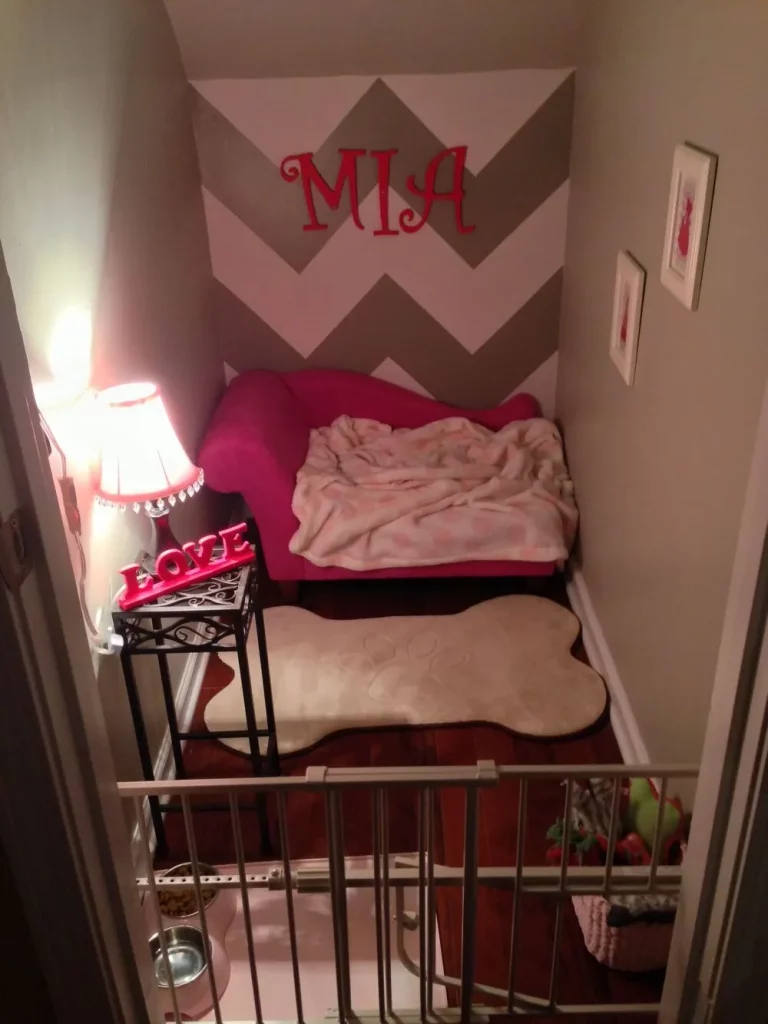
✅ Check to see if the cat has escape routes. Think about this question: сan your cat easily run away and hide from a dog? If not, you can arrange for cat trees or shelves higher off the floor that the dog can’t climb. This will help keep the cat safe until your dog changes from anger to mercy.
Last update on 2024-04-23 / Affiliate links / Images from Amazon Product Advertising API
If nothing works
You may have already tried all the tips in this article, but the situation has stayed the same. Some dogs are tough to train. So what can you do? There are several options: seek help from a professional or try training with an ultrasound device.
Ultrasound is as unpleasant to dogs as the sound of scraping a board is to us. So it can stop a dog from engaging in unwanted behavior. However, it is safe (unlike shock collars).
But since it is not a positive reinforcement anyway, I recommend using it only as a last resort. If the dog is overly aggressive and can hurt or kill cats, it should not be left unattended.
My recommendation is OnGuard from GoodLife. It has proven to be a reliable device suitable for eliminating unwanted behavior.
Conclusions
To summarize, there are four basic ways to stop dog vs. cat aggression:
- Teach your dog a command such as “NO” or “Leave It” to stop him from an unwanted action.
- Help the dog understand that staying calmly near the cat is okay by using a counterconditioning technique.
- Channel your dog’s energy by providing plenty of physical and mental activity.
- Use calming aids such as a diffuser or soothing treats as extra help.
If you can’t get results on your own, contact a professional.
As a last resort, use an ultrasonic training device. Nevertheless, continue to apply all the tips we have discussed. I believe that patience and your love will eventually do the trick! Best of luck to you on this challenging journey! ❤️
I’d love to hear from you about the positive changes in your life in the comments.
Watch a video on How to Introduce a Cat to a Dog.
- How to make OUTDOOR DIY dog potty area - June 18, 2023
- BEST dog organization ideas to keep your home tidy - June 1, 2023
- 10 Best behaved dog breeds - May 29, 2023




